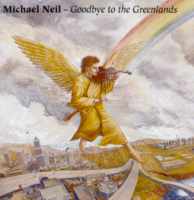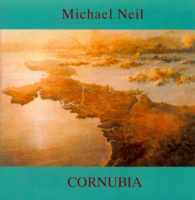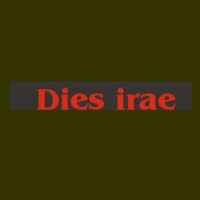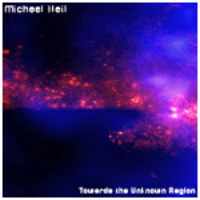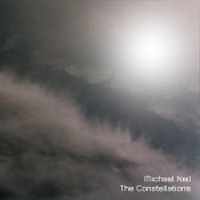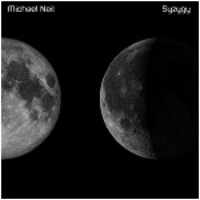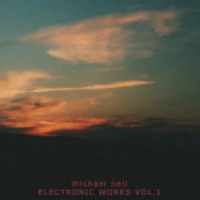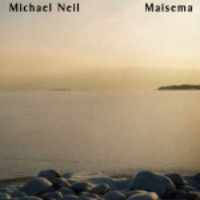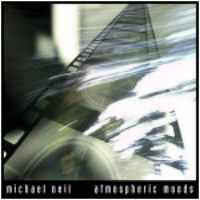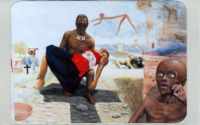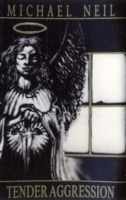The lives and times of a truly visionary artist:
|
||

Michael, after a few initial tape releases to establish Cleve Littlewood’s cassette label, you put out your first cds “Goodbye to the Greenlands” and “Trust” out in the early ‘90’s, followed by the milestone recording “Cornubia”… The first two albums were, in many ways, anticipating the 1998 release of “Cornubia”, itself the product of a ten year gestation period. This album, considered by many to be my magnum opus, is the summation of “Goodbye to the Greenlands” and “Trust” (a semi-autobiographical musical journey partly inspired by John Bunyan’s “The Pilgrims Progress”) and the first work to result from the luxury of having a recording studio for the very first time.
The works proceeding “Cornubia” were quite different but, largely, received the same approach in composition method. Concurrent to recording “Cornubia”, work had already started on “Dies Irae”, “Moments of Heaven”, “Towards the Unknown Region” and tracks that would eventually make up “Flip Side”… The music found on “Cornubia” (the Latin name for Cornwall) is the result of a long cherished dream. At the time of conception I was neither musically nor spiritually mature enough to attempt to capture, in the vision that presented itself to me. At the beginning of 1996 I was actually “impressed upon” to start on a musical evocation of John Miller’s incredible painting Cornwall’s spiritual beauty encompassing past, present and future. Because of the conflicting stories, I have not attempted to detail the legends of the places that have inspired the music. For such stuff are myths made of…. To me, the outcome of “Moments of Heaven” is quite similar to “Cornubia”, but it also sounds more orchestral and impressionistic to my ears… Taking the musical material approach of “Cornubia”, I decided to produce an extended composition to reflect the length of the poem. The inspiration for the work overall was the experience of the sunlight reflection on the ocean with patterns and colors and movement one experiences on calm summer days. My musical inspiration behind “Moments of Heaven” was, initially, the impressionist music of Debussy and Ravel. The remaining tracks were similar but not written concurrently, “The Three Shires Suite” being composed much later. This composition was, and remains, probably the tightest in structure of all my works.
Inspired by the convergence of the English shires of Staffordshire, Cheshire and Derbyshire located in the Peak District, it boasts awesome rock formations and the peak called the Three Shires view. Strangely, and I am not quite sure why, Benjamin Britten’s “Four Sea Interludes” were uppermost in mind whilst composing this work. Perhaps this was why I felt it should be a part of the album. Please share a bit of the background of “Dies Irae” album, which contains music in a modern classical and orchestral style..
For the title track of the album, I was greatly inspired by the voice setting I had created on my main synthesizer, with its dark foreboding and menacing effect which helped to shape the work. The track “Ecce Homo” is perhaps the oldest composition from this period – with the exception of “Helman Tor” from “Cornubia”, which was originally composed in 1985 but considerably reworked eleven years later. Michael, can you tell something about the inspiration that lead to the album “Ikons”? I had become a bit of a amateur astronomer and would spend the night hours searching out the night sky. I was struck by the sheer immensity of the cosmos and had wondered how we humans, constituting the same elemental makeup of stars, experience such a brief existence. I had for many years subscribed to the Christian faith. However, I never accepted the notion of an “afterlife”: this appeared too simplistic and rather daunting. I felt, rather, that just as the body after death rots back into the earth it, therefore, returns to an elemental form. As for cremation? I suppose in a much reduced state (laughs). So “Ikons” was my response at the time and the poetry I chose a means of expressing my thoughts. So several of your albums are philosophically connected? Let’s talk about “The Look of Memory”, which came out in 2000. Hearing the previous, this one must also have a special meaning… I chose to use low-fi field recordings to enhance the music and give it a greater depth of meaning. I have to confess that I didn’t travel to the Central African Republic to record the Ba-Benzélé Pygmies mushroom gathering in the jungle for “Songs of the Last Tribe”. This was taken from an existing anthropological recording from France. This work yet again highlights my increasing preoccupation with the subject of memory as well as anticipating the subject of erasure, which would find its voice more profoundly in “The Breath of Exhaling Ghosts”.
That same year, also “Towards the Unknown Region” and “In Extremis” saw the light of day…. The album “In Extremis” is the last work in a “classical style” which began with “Trust”. For this project I use quotes from Virgil’s “Aeneid” and Pindar’s “Pythagoras”, helping (for me) to distance the work from any particular religious view in that it deals specifically with the subject of mortality. A particular mention is In memoriam written in response to the death of Peter Harrison, creator of the dark ambient and experimental music label Direction Music. A favorite of his was Luciano Berio’s “Requies”, written in memoriam to his former wife Cathy Berberian and a sense of this found its way into my piece for him. As I say, from this last work I began to develop a new approach to composition. This resulted in “The Constellations”. …which seems to be a work of art I heard you seem to be very pleased with? During 1999 and 2000 I spent a large part of the time scoring the work using a Star Chart of the Northern Hemispheric Constellations. The re-creation of the stellar configurations onto staves was quite painstaking and detailed. Once the graphic representation was notated I would then go into my studio and record the music from the written score.
The end result on “The Constellations” is very spacey, and the album as such is a companion piece to my double album “Towards the Unknown Region”. What one hears is exactly how the constellations with their stars, nebular and other objects appear in the sky. A real audio/visual experience. Also the music emerging from this practice was quite unlike any I had composed up to that time. If “The Constellations” was showcased in planetarium it would perhaps make more impact. Who knows, but I suspect it will emerge strengthened in time… So what new musical ideas and new ways of composing followed after that? My first experiment was in quarter tones which resulted in the opening track of “Syzygy”. Of course this is not based on a single pitch but it allowed me to experiment with the free tuning system available on my synthesizer.
Rather than simply create a scale by altering pitches randomly, I searched for data that would “dictate” the pitch for me. I guess this was my version of Xenakis’ stochastic music in which, using among others probability theory, he would create mathematical models in order to form a composition. My first attempt was inspired by a location on the south Devon coast near Dartmouth. I was drawn to a mariner’s day mark at the mouth of the Dart and spent time there filming and researching the topographical data and the day mark itself. From this data I created a scale, the result of which can be heard on my film The Brownstone Trilogy. However, I felt this particular piece inadequately articulated this approach, but it was useful non the less – a prototype as it were. I used this scale again in two works that became part of “Syzygy” – “Second Phase” & “Third Phase”. I read this work was inspired by Dartmoor and the stone circles… I was living on the edge of Dartmoor throughout my time at Dartington and would often spend hours roaming around familiarizing myself with the landscape and objects of interest. I could not shake off the sense that some large part of me was somehow linked to this place, despite having no recollection of any past relationship to it. I have often noted how a landscape or a site or location will instill a certain psychological response. This response has manifested itself in my need to artistically express this experience through music and, increasingly, sound. Dartmoor is particularly resonant in this respect because, I believe, its history is a canvas depicting a constant process of erasure in both geological and social terms. This idea was to become very significant because it represented my sense of personal loss when my father died in 2005. It also became a further elaboration on my film “The Brownstone Trilogy”, which itself was a response to my Father’s illness. This event was the catalyst for childhood memories – real or imagined. Certain places may become impregnated by some subtle physical emanation, the thoughts and emotions of those living and dying within them. I picked out 12 stone circles and mapped their co-ordinates and converted the numbers into pitches. The result led to the creation of two scales one scale for latitude and one for longitude. The latter scale is relatively monotone and the solution to its performance came when the guitarist Suhail Merchant asked me to write something for him. He specializes in fretless electric guitar played with an e bow. This instrument was ideal for playing the longitude scale. 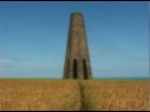 I made field recordings throughout my time on Dartmoor. These comprised of elemental sounds; wind, water etc. I discovered an old rusting farm gate in a valley that interacts with the wind when it blows in certain directions. I also heard Ashley Franklin has supported you for a long time as well…
Michael, you also spent some time at Dartington College of Performing Arts during the 2000’s… The postmodern deconstructionist theoretical ethos of this institute challenged me to delve deeper into my practice and hone my skills as a composer and, strangely, performer. Until then I had never performed my work before an audience and, I have to say, the experience, whilst enjoyable, didn’t exactly lead to a career on the road. Instead it gave me the opportunity to consider the nature of performance and the notion of what constitutes “live” music. One of the biggest disappointments of my earlier life was attending a Tangerine Dream concert and being bored out of my mind. I couldn’t help thinking at the time that I would rather have stayed at home and listened to their albums than watch three ageing Germans twiddle their knobs before an adoring public. To this day the rock concert with attendant arm swaying mindlessness (not to mention cigarette lighter waving contraventions of Health and Safety regulations) strikes me as banal and even worse puerile. Even classical concerts make me twinge with embarrassment with all that endless clapping and flower offering….Rant! The TD experience lent much to my decision not to play concerts. This was confirmed when Jean Michel Jarre started covering up for his lack of musical ideas by staging increasingly spectacular shows. However, to everlasting joy John Dyson beautifully sent this up in his hilarious performance at the KLEM Dag in 1991. This single event, for me, was the pinnacle of live synth music performance. It was also around this time that I began to feel adrift in the EM scene. I personally never enjoyed most of the music and never really felt much a part of the scene. My ideas and approach were increasingly out of step with my “peers”. Dartington, however, challenged me regarding performance. Despite performing as part of my degree, I was still unconvinced as to its viability in terms of my work and even before my studies I was trying to find new ways of bringing electronic music to an audience that would excite and stimulate without resorting to cliché. Coincidentally, I was approached by a former Dartington student as far back as 1995, who used my work for her experimental film entry into the Celtic Film Festival. We discussed the possibility of creating a sound/film and exhibition installation involving film projection on a cloud base. So did anything else materialize from that period? The solution finally came when I performed a pre-recorded electro-acoustic piece as part of my undergraduate degree. The performance of this genre of music is called “sound diffusion” and it was this practice that provided me with the solution to performing my own work.
I heard you also visited the COMA festival in Doncaster in 2006.. By now I was studying a Masters Degree and I was well into a new music work as part of my MA thesis. This was to become “The Breath of Exhaling Ghosts” and COMA gave me an opportunity to premier the work before a large audience. The music was projected through 12 speakers via a 16 channel mixing console with each channel assigned its own independent function – volume, EQ, etc. However, the music itself ran contrary to the practice of electro-acoustic music, which relies on dynamic gestures and moments of minutiae detail within the musical material. This variance led me to define my performance as “Static Sound Spatialization”. I don’t regard this practice as performance as much as it is a performative aspect of my work and I prefer to use the term “presentation“. A propos. In one concert, I presented a number of tracks from previous albums in this way, and was overwhelmed by how different they sound compared to a stereo experience. You recently moved to Berlin. How come? I also felt in Berlin, rightly or wrongly, I would find more of an outlet for my work. However, I needed to work for a living in order to achieve this. A period of time presented itself that allowed me to work on new material for my download platform, which I initiated with MusicZeit in 2007. The artist forum group The International Necronautical Society had designated Berlin as the world capital of erasure in 2005 and this really put the hook in me. The notion that empty spaces created by the Berlin Wall, the area known as the “death strip”, appealed to a sonic/music recreation of the space. On a more practical level I am interested in producing music for film and Berlin is fertile ground for this: two of my best friends here are film makers, so the direction seems to be pointing that way. I suspect you also had some material from your academic period you anxiously wanted to release…. Concurrent to this, I had been working on material for my soundtrack to F.W. Murnau’s “Nosferatu: A Symphony of Horror”. This classic 1922 horror film is an outstanding example of German expressionist cinema but the versions I had seen had pretty awful soundtracks.
Michael, you already mentioned you lived a short while in Finland. What effect did that have on you personally and the music your produced then?
I had been enormously affected by my time there of almost a year, altogether. I found the ambience of Helsinki stimulating and a great place to do slow gestating music in an ambient style. I also felt that using shortwave radio signals of broadcasts from the north reconnected me to the Nordic region.
Can you tell a bit more on the background of “Silent Light”? So what is this Electronic Voice Phenomenon all about? Silence is twice as fast backwards… Silence is twice as fast backwards… Silence is twice as fast backwards EVP asserts that it is possible to detect the voices of the dead on magnetic tape recordings. As said previously, I don’t subscribe to this in any way and proof is found wanting, but I am fascinated in it as a device. Wikipedia covers the subject for further interest. The connection with EVP in relationship to my thesis was in the Robin Rimbaud quote above. A few years later, and with this still very much in mind, I began work on “Silent Light”. My abiding interest in the phenomena of radio signals play a large role in this work, which tie together the notion of EVP with that of Cocteau’s film. The piece was originally an interactive program in which one could highlight, with a computer mouse, nodes on transmitter/receiver aerial masts thereby activating one of the monologues. The player could then mix the broadcasts in any combination they wished. The effect would sound like a number of disembodied voices transmitted over airwaves. Michael, I never saw a listing of the equipment you used, so are you willing to share some information on that? Keys: FX Sound Mixing: Recording: What so have you currently in the works? First there’s “Tapestries”, an epic work inspired by Berlin and the electronic music that inspired me to become a composer. It incorporates instruments familiar to the 70’s period of Tangerine Dream and Klaus Schulze like the Mellotron, EMS VCS3 as well as software synthesizers developed by the German H.R. Fortune: A bridge between past and present in terms of music and technology. The other work is “Between Sleeping and Waking”. This project puts me back on philosophical ground and depicts Hypnagogia, the experience of a state between wakefulness and sleep (a term coined by Alfred Maury), dreaming and (re)awakening. Discography:
* Trust (Electronical Dreams, 1995) Other Works: -Lux Gratia (2001) – Track on disc 2 of The Sky Goes All The Way Home Website: www.michaelneil.eu |
||

